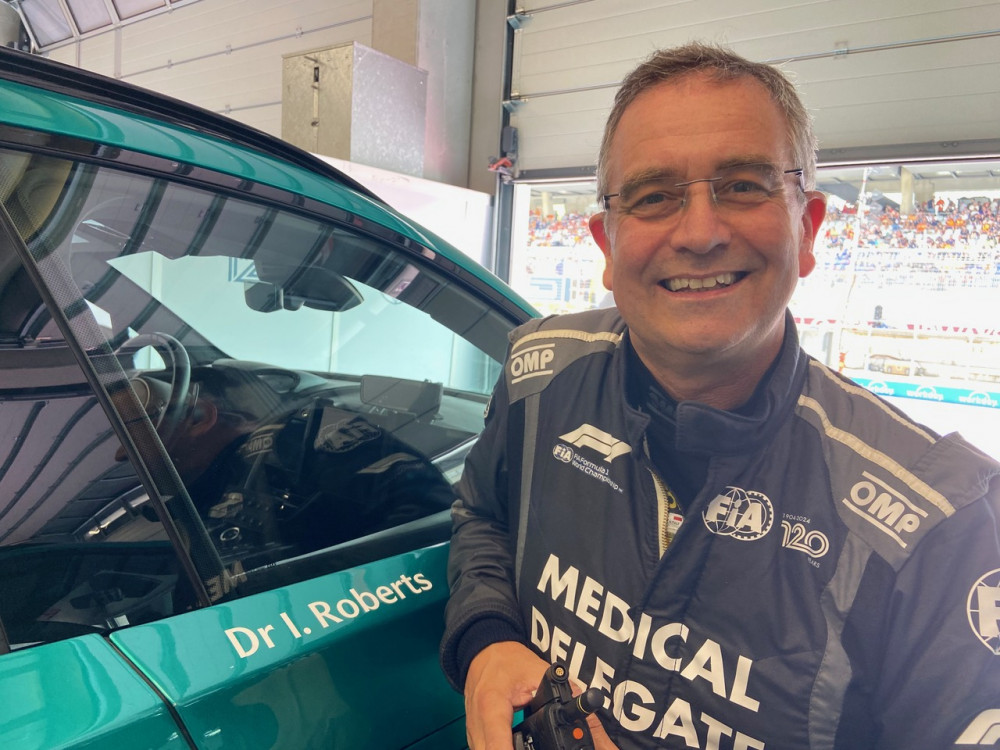Meet the top Formula 1 doctor who started his career in Stoke-on-Trent
By Jordan Edwards 3rd Jul 2025
By Jordan Edwards 3rd Jul 2025

A Formula 1 doctor who started his career in Stoke-on-Trent has spoken fondly of the city ahead of the British Grand Prix this weekend.
Dr Ian Roberts is often referred to as one of the most important people on track and previously worked in hospitals in the city between 1993 and 1998 as a rotational registrar in the NHS.
This included regularly working at Stoke-on-Trent's North Staffordshire Royal Infirmary and City General Hospital sites, and he also completed a Master of Medical Sciences degree with Keele University between 1996 and 1998.
Now, as chief medical officer for Formula 1, Ian is regularly on standby during races, ready to rush to the scene of a crash at a moment's notice.
Ian said: "My job isn't just to be in the car, it's also to ensure that the FIA medical regulations are all complied with, and we do a lot of work before the racing gets underway, such as studying the track, checking the medical centre is suitable and carrying out various exercises.
"The FIA Medical Car is on standby at the end of the pit lane during all sessions, so that's practice, qualifying and the race, and we will be in our helmets and fireproofs, ready to go should anything happen on the track."
Ian received the FIA President Award and international praise for his brave response to help driver Romain Grosjean when his car ripped in half and burst into flames in a crash on the first lap of the 2020 Bahrain Grand Prix, considered one of the most miraculous escapes in recent racing history.

The sport has made significant advancements in driver safety over the years, with serious incidents becoming less frequent. However, the sport's inherent dangers still exist, highlighted by the Grosjean crash in 2020.
Ian added: "Due to the FIA's leading role in safety and safety research, safety in the sport has improved to a level where it would have been unrecognisable 20 years ago.
"With the Grosjean crash, I did fear the worst when we got to the scene and you could see the flames and feel the intensity of the heat.
"As we pulled up, I could actually see him, and he was moving and starting to get himself out of his car, and in that split second, I ran towards him to see what I could do to help.
"Thankfully a race marshal was able to use a fire extinguisher just enough to get the flame away, and I reached over and just sort of grabbed him to help him over the barrier.
"The heat was phenomenal, it was stinging my face and it melted the bits of plastic on my race suit, which I still have in my loft at home.
"It was nice to receive the award and Romain said some very nice things afterwards, but I just did what was necessary at the time."
Despite the intensity of the race track and now travelling all over the world on a weekly basis, Ian still has very fond memories of his time in Stoke-on-Trent and Keele University
He added: "It was a great time in my career working in Stoke-on-Trent, which was just prior to when I became a consultant in anaesthesia and intensive care.
"I actually look back on those days with real fondness because although it was a very busy time, I learned so much.
"During that time, I also completed my Masters with Keele University part-time over two years under the supervision of Professor Brian McGuinness, so in my case I would go straight from the lecture theatre or intensive care into lectures and tutorials at the North Staffordshire Medical Institute, and then it was back to work or being on call.
"It was a pleasure to be associated with the university."
-------
Keele University is a sponsor of Stoke Nub News. Support from local partners such as them helps us keep our local news free and easy-to-read.
CHECK OUT OUR FREE NEWSLETTER!
5 TOP STORIES EVERY FRIDAY!
Click here to sign up: stoke newsletter
Share:

























